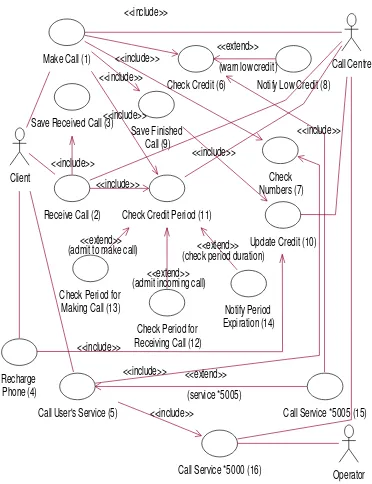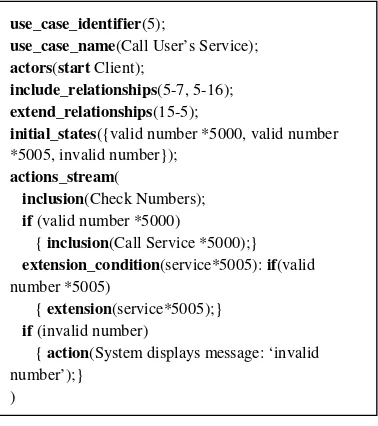Structural testing with use cases
Texto completo
Figure
![Figure 1. A use case diagram extracted from the UMLSpecification v1.5, pp.3-99 [4].](https://thumb-us.123doks.com/thumbv2/123dok_es/4903533.71917/2.595.93.284.423.636/figure-use-case-diagram-extracted-umlspecification-v-pp.webp)


Documento similar
This paper presents an extension of the MANTIS reference architecture for the use case presented in [28] (GOIZPER use case) but focusing on the data analysis techniques used and
Note: The content of the items is provided: Behavior (Frequency condom use: How often have you used a condom in vaginal intercourse?; Behavioral Intention: How often do you intend
This paper proposes the use of the Sup-Wald test of Andrews (1993) to detect structural breaks in the parameters –factor loadings or correlations- associated with the common
Our test will consist of an adaptation of the Distance-to-Boundary Method (DB) which was proposed by Berrendero, Cuevas, & V´azquez-Grande (2006) for the simplest, usual case
In the second case, to verify that the isotopic fractionation behavior of smectites dealing with irreversible incorporation of Li to their structural framework was correctly
The broad “WHO-ICF” perspective on HrWB provided at Figure 1 has a significant implication also for HRQoL. The develop- ment of ICF and its conceptual approach has challenged to
The use of this methodology is exemplified by a case example using glass profiles obtained from real forensic cases, where several evidence evaluation methods
In order to use standard symbols, the best alternative is to use the distribution-free version of the test, which, as it can be ascertained from the table, rejects the null